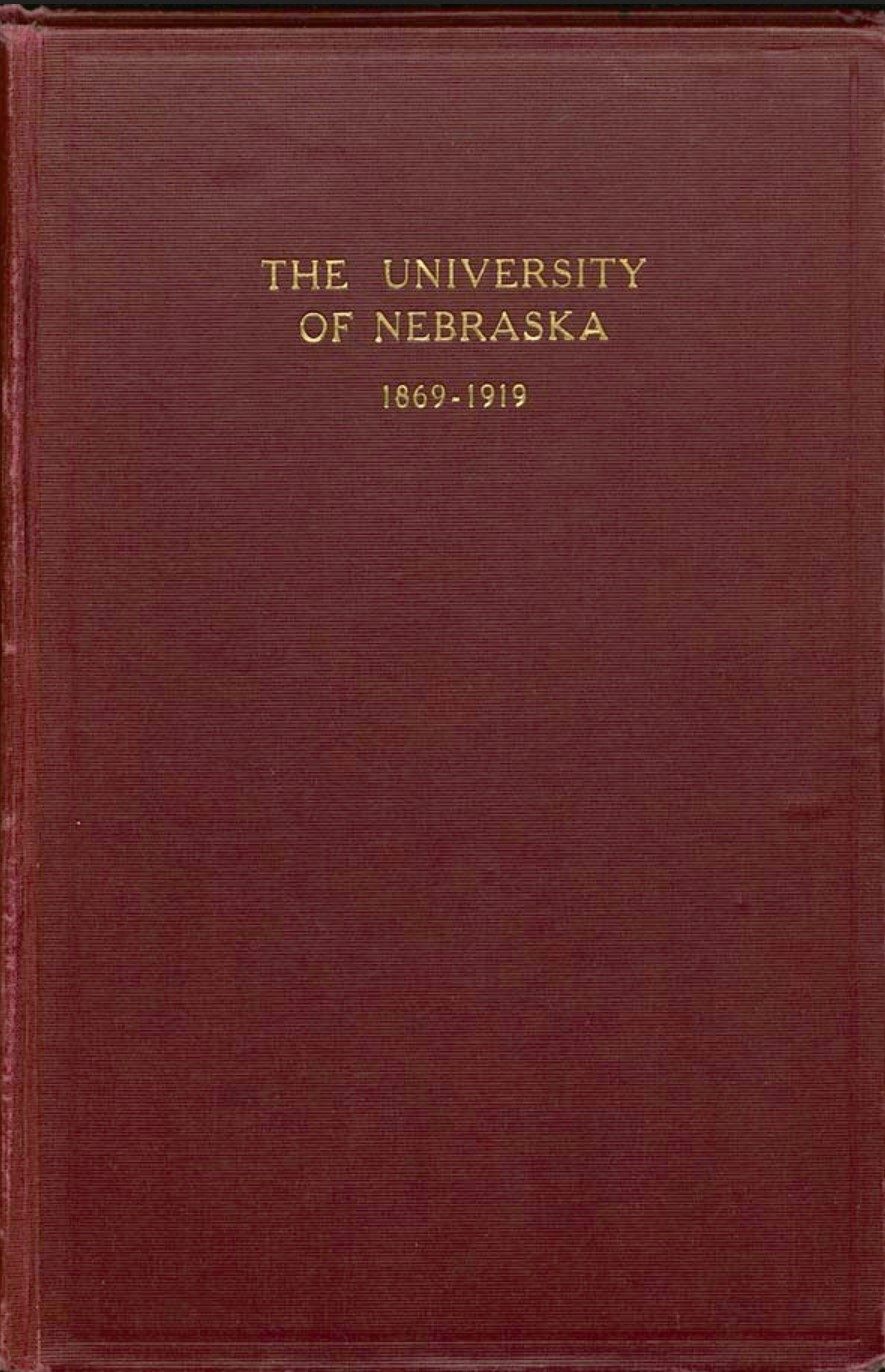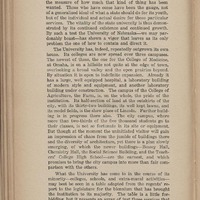110
Item
-
Title
-
110
-
Description
-
Semi-Centennial Anniversary Book: The University of Nebraska, 1869-1919
-
Transcription
-
the measure of how much that kind of thing has been wanted. Those who have come have been the gauge, not of a generalized ideal of what a state should do for its youth, but of the individual and actual desire for those particular services. The vitality of the state university is thus demonstrated by its continued existence and continued growth. By such a test the University of Nebraska—we may pardonably boast—has shown a vigor that leaves as its only problem the one of how to contain and direct it.
The University has, indeed, repeatedly outgrown its own house. Its colleges are now spread over three campuses. The newest of these, the one for the College of Medicine, at Omaha, is on a hillside not quite at the edge of town, overlooking a broad valley and the open prairies beyond. By situation it is open to indefinite expansion. Already it has a large, well equipped hospital, a laboratory building of modern style and equipment, and another laboratory building under construction. The campus of the College of Agriculture, the Farm, is, on the whole, the pride of the institution. Its half-section of land at the outskirts of the city, with its thirty-two buildings, its well kept lawns, and its model fields, is the show place of Lincoln. Further building is in progress there also. The city campus, where more than two-thirds of the five thousand students go to their classes, is not so fortunate in its site or equipment. But though at the moment the uninitiated visitor will gain an impression of chaos from the jumble of buildings there and the diversity of architecture, yet there is a plan slowly emerging, of which the newer buildings—Bessey Hall, Chemistry Hall, the Social Science Building, and the Teachers' College High School—are the earnest, and which promises to bring the city campus into more than fair comparison with the others.
What the University has come to in the course of its minority—colleges, schools, and extra-mural activities—may best be seen in a table adapted from the regents' report to the legislature for the biennium that has brought the institution to its majority. The table is a little forbidding, but it presents an array of just those services that
-
Rights
-
To inquire about usage, please contact Archives & Special Collections, University of Nebraska-Lincoln Libraries. These images are for educational use only. Not all images are available for publication.



